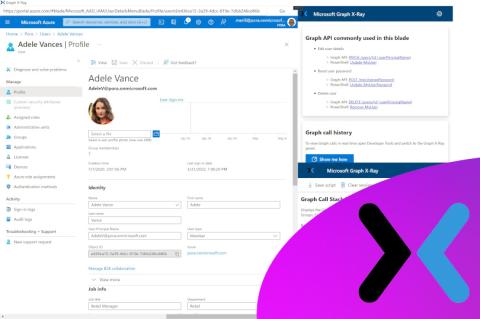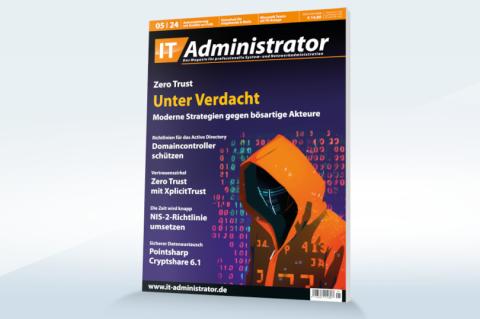Die H-Serie beschäftigt sich mit audiovisuellen und Multimedia-Systemen.
Characteristics of transmission channels used for other than telephone purposes
H.11
[Withdrawn] Characteristics of circuits in the switched telephone network
H.12
[Withdrawn] Characteristics of telephone-type leased circuits
H.13
[Withdrawn] Impulsive noise measuring equipment for telephone-type circuits
H.14
[Withdrawn] Characteristics of group links for the transmission of wide-spectrum signals
H.15
[Withdrawn] Characteristics of supergroup links for the transmission of wide-spectrum signals
H.16
[Withdrawn] Characteristics of an impulsive-noise measuring instrument for wideband data transmission
Use of telephone-type circuits for voice-frequency telegraphy
H.21
[Withdrawn] Composition and terminology of international voice-frequency telegraph systems
H.22
[Withdrawn] Transmission requirements of international voice-frequency telegraph links (at 50, 100 and 200 bauds)
H.23
[Withdrawn] Basic characteristics of telegraph equipments used in international voice-frequency telegraph systems
Telephone circuits or cables used for various types of telegraph transmission or simultaneous transmission
H.32
[Withdrawn] Simultaneous communication by telephone and telegraph on a telephone-type circuit
H.34
[Withdrawn] Subdivision of the frequency band of a telephone-type circuit between telegraphy and other services
Telephone-type circuits used for facsimile telegraphy
H.43
[Withdrawn] Document facsimile transmissions on leased telephone-type circuits
Characteristics of data signals
H.51
[Withdrawn] Power levels for data transmission over telephone lines
H.52
[Withdrawn] Transmission of wide-spectrum signals (data, facsimile, etc.) on wideband group links
H.53
[Withdrawn] Transmission of wide-spectrum signals (data, etc.) over wideband supergroup links
Characteristics of visual telephone systems
H.100
Visual telephone systems
H.110
Hypothetical reference connections for videoconferencing using primary digital group transmission
H.120
Codecs for videoconferencing using primary digital group transmission
H.130
Frame structures for use in the international interconnection of digital codecs for videoconferencing or visual telephony
H.140
A multipoint international videoconference system
Infrastructure of audiovisual services
General
H.200
Framework for Recommendations for audiovisual services
Transmission multiplexing and synchronization
H.221
Frame structure for a 64 to 1920 kbit/s channel in audiovisual teleservices
H.222.0
Information technology - Generic coding of moving pictures and associated audio information: Systems
H.222.1
Multimedia multiplex and synchronization for audiovisual communication in ATM environments
H.223
Multiplexing protocol for low bit rate multimedia communication
H.224
A real time control protocol for simplex applications using the H.221 LSD/HSD/MLP channels
H.225.0
Media stream packetization and synchronization for visual telephone systems on a non-guaranteed quality of service LANs
Systems aspects
H.230
Frame-synchronous control and indication signals for audiovisual systems
H.231
Multipoint control units for audiovisual systems using digital channels up to 1920 kbit/s
H.233
Confidentiality system for audiovisual services
H.234
Encryption key management and authentication system for audiovisual services
H.235
Security and encryption for H-series (H.323 and other H.245-based) multimedia terminals
ITU-T Rec. H.235 (2003) content was reorganized into H.235.1 to .7 when revised in 2005.
H.Imp235
Implementors Guide for H.235 V3: "Security and encryption for H-series (H.323 and other H.245-based) multimedia terminals"
H.235.0
H.323 security: Framework for security in H series (H.323 and other H.245-based) multimedia systems
H.235.1
H.323 security framework: Baseline security profile
H.235.2
H.323 security framework: Signature security profile
H.235.3
H.323 security: Hybrid security profile
H.235.4
H.323 security: Direct and selective routed call security
H.235.5
H.323 security: Framework for secure authentication in RAS using weak shared secrets
H.235.6
H.323 security framework: Voice encryption profile with native H.235/H.245 key management
H.235.7
H.323 security framework: Usage of the MIKEY key management protocol for the Secure Real Time Transport Protocol (SRTP) within H.235
H.235.8
H.323 security: Key exchange for SRTP using secure signalling channels
H.235.9
H.323 security framework: Security gateway support for H.323
Communication procedures
H.242
System for establishing communication between audiovisual terminals using digital channels up to 2 Mbit/s
H.243
Procedures for establishing communication between three or more audiovisual terminals using digital channels up to 2 Mbit/s
H.244
Synchronized aggregation of multiple 64 or 56 kbit/s channels
H.245
Control protocol for multimedia communication
H.239
Role management and additional media channels for H.300-series terminals
H.Imp239
Implementors' Guide for ITU-T Recommendation H.239 ("Role management and additional media channels for H.300-series terminals")
H.241
Extended video procedures and control signals for H.300-series terminals
H.242
System for establishing communication between audiovisual terminals using digital channels up to 2 Mbit/s
H.243
Procedures for establishing communication between three or more audiovisual terminals using digital channels up to 1920 kbit/s
H.244
Synchronized aggregation of multiple 64 or 56 kbit/s channels
H.245
Control protocol for multimedia communication
H.246
Interworking of H-series multimedia terminals with H-series multimedia terminals and voice/voiceband terminals on GSTN and ISDN
H.247
Multipoint extension for broadband audiovisual communication systems and terminals
H.248
Gateway control protocol
H.248.1
Gateway control protocol: Version 3
H.248.2
Gateway control protocol: Facsimile, text conversation and call discrimination packages
H.248.3
Gateway control protocol: User interface elements and actions packages
H.248.4
Gateway control protocol: Transport over Stream Control Transmission Protocol (SCTP)
H.248.5
Gateway control protocol: Transport over ATM
H.248.6
Gateway control protocol: Dynamic Tone Definition package
H.248.7
Gateway control protocol: Generic Announcement package
H.248.8
Gateway control protocol: Error code and service change reason description
H.248.9
Gateway control protocol: Advanced media server packages
H.248.10
Gateway control protocol: Media gateway resource congestion handling package
H.248.11
Gateway control protocol: Media gateway overload control package
H.248.12
Gateway control protocol: H.248.1 packages for H.323 and H.324 interworking
H.248.13
Gateway control protocol: Quality Alert Ceasing package
H.248.14
Gateway control protocol: Inactivity timer package
H.248.15
Gateway control protocol: SDP H.248 package attribute
H.248.16
Gateway control protocol: Enhanced digit collection packages and procedures
H.248.17
Gateway control protocol: Line test packages
H.248.18
Gateway control protocol: Package for support of multiple profiles
H.248.19
Gateway control protocol: Decomposed multipoint control unit, audio, video and data conferencing packages
H.248.20
Gateway control protocol: The use of local and remote descriptors with H.221 and H.223 multiplexing
H.248.21
Gateway control protocol: Semi-permanent connection handling package
H.248.22
Gateway control protocol: Shared Risk Group package
H.248.23
Gateway control protocol: Enhanced Alerting packages
H.248.24
Gateway control protocol: Multi-frequency tone generation and detection packages
H.248.25
Gateway control protocol: Basic CAS packages
H.248.26
Gateway control protocol: Enhanced analog lines packages
H.248.27
Gateway control protocol: Supplemental tones packages
H.248.28
Gateway control protocol: International CAS packages
H.248.29
Gateway control protocol: International CAS compelled register signalling packages
H.248.30
Gateway control protocol: RTCP extended performance metrics packages
H.248.31
Gateway control protocol: Adaptive jitter buffer package
H.248.32
Gateway control protocol: Detailed congestion reporting package
H.248.33
Gateway control protocol: PCM frame spare bit package
H.248.34
Gateway control protocol: Stimulus analogue lines package
H.248.35
Gateway control protocol: Coin package
H.248.36
Gateway control protocol: Hanging Termination Detection package
H.248.37
Gateway control protocol: IP NAPT traversal package
H.248.38
Gateway control protocol: Base context package
H.248.39
Gateway control protocol: H.248 SDP parameter identification and wildcarding
H.248.41
Gateway control protocol: IP domain connection package
H.248.42
Gateway control protocol: DCME interworking package
H.248.45
Gateway control protocol: MGC information package
H.Imp248.1
Implementors' Guide for Recommendation H.248.1 Version 1 (03/2002) ("Media Gateway Control Protocol")
H.249
Extended user input indications
Coding of moving video
H.261
Video codec for audiovisual services at p x 64 kbit/s
H.262
Registration of copyright identifier
H.263
Video coding for low bit rate communication
H.Imp263
Implementors Guide for H.263: "Video coding for low bit rate communication"
H.264
Advanced video coding for generic audiovisual services
H.264.1
Conformance specification for H.264 advanced video coding
H.264.2
Reference software for H.264 advanced video coding
H.271
Video back channel messages for conveyance of status information and requests from a video receiver to a video sender
Related systems aspects
H.281
A far end camera control protocol for videoconferences using H.224
H.282
Remote device control protocol for multimedia applications
H.283
Remote device control logical channel transport
Systems and terminal equipment for audiovisual services
H.310
Broadband and audiovisual communication systems and terminals
H.320
Narrow-band visual telephone systems and terminal equipment
H.321
Adaptation of H.320 visual telephone terminals to B-ISDN environments
H.322
Visual telephone systems and terminal equipment for local area networks which provide a guaranteed quality of service
H.323
Visual telephone systems and equipment for local area networks which provide a non-guaranteed quality of service
H.324
Terminal for low bit rate multimedia communication
H.331
Broadcasting type audiovisual multipoint systems and terminal equipment
H.332
H.323 extended for loosely coupled conferences
H.341
Multimedia management information base
Directory services architecture for multimedia conferencing
H.350
Directory services architecture for multimedia conferencing
H.350.1
Directory services architecture for H.323
H.350.2
Directory services architecture for H.235
H.350.3
Directory services architecture for H.320
H.350.4
Directory services architecture for SIP
H.350.5
Directory services architecture for non-standard protocols
H.350.6
Directory services architecture for call forwarding and preferences
H.Imp350
Implementors' Guide for ITU-T H.350 Sub-series of Recommendations ("Directory Services Architecture for Multimedia Conferencing")
QoS for H.323 systems
H.360
An architecture for end-to-end QoS control and signalling
H.361
End-to-end quality of service (QoS) and service priority signalling in H.323 systems
Supplementary services in H.323
H.450.1
Generic functional protocol for the support of supplementary services in H.323
H.450.2
Call transfer supplementary service for H.323
H.450.3
Call diversion supplementary service for H.323
H.450.4
Call hold supplementary service for H.323
H.450.5
Call park and call pickup supplementary services for H.323
H.450.6
Call waiting supplementary service for H.323
H.450.7
Message waiting indication supplementary service for H.323
H.450.8
Name identification supplementary service for H.323
H.450.9
Call completion supplementary services for H.323
H.450.10
Call offering supplementary services for H.323
H.450.11
Call intrusion supplementary service for H.323
H.450.12
Common Information Addtional Network Feature for H.323
H.460.1
Guidelines for the use of the generic extensible framework
H.460.2
Number Portability interworking between H.323 and SCN networks
H.460.3
Circuit maps within H.323 systems
H.460.4
Call priority designation for H.323 calls
H.460.5
H.225.0 transport of multiple Q.931 information elements of the same type
H.460.6
Extended Fast Connect feature
H.460.7
Digit maps within H.323 systems
H.460.8
Querying for alternate routes within H.323 systems
H.460.9
Support for online QoS-monitoring reporting within H.323 systems
H.460.10
Call party category within H.323 systems
H.460.11
Delayed call establishment within H.323 systems
H.460.12
Glare control indicator within H.323 systems
H.460.13
Called user release control
H.460.14
Support for Multi-Level Precedence and Preemption (MLPP) within H.323 systems
H.460.15
Call signalling transport channel suspension and redirection within H.323 systems
H.460.16
Multiple message release sequence capability
H.460.17
Using H.225.0 call signalling connection as transport for H.323 RAS messages
H.460.18
Traversal of H.323 signalling across network address translators and firewalls
H.460.19
Traversal of H.323 media across network address translators and firewalls
H.460.20
Location number within H.323 systems
H.460.21
Message broadcast for H.323 systems
H.501
Protocol for mobility management and intra/inter-domain communication in multimedia systems
H.510
Mobility for H.323 multimedia systems and services
H.530
Symmetric security procedures for H.323 mobility in H.510
H.610
Full service VDSL - System architecture and customer premises equipment
H.611
Full-Service VDSL - Operations, Administration Maintenance & Provision aspects
Supplements to the Series H Recommendations
H.Sup1
Application profile - Sign language and lip-reading real-time conversation using low bit-rate video communication
H.Sup2
H.248.x sub-series packages guide - Release 8
H.Sup3
Operator requirements for full-service VDSL in ITU-T Recommendations H.610 and H.611
H.Sup4
Repository of generic parameters for ITU-T Recommendations H.460.x sub-series
H.Sup5
Measurement of the load of telephone circuits under field conditions
H Suppl. 5 was an alias name of G Suppl. 5 (1984). Only this alias name was suppressed. ITU-T G Suppl. 5 remains valid
H.Sup6
Decomposed gateways -Control load quantum - Busy hour context attempts (BHCoA) and busy hour session attempts (BHSA)
H.Sup16
[Withdrawn] Out-of-band characteristics of signals applied to leased telephone-type circuits
This Supplement was withdrawn because its content was out of date


